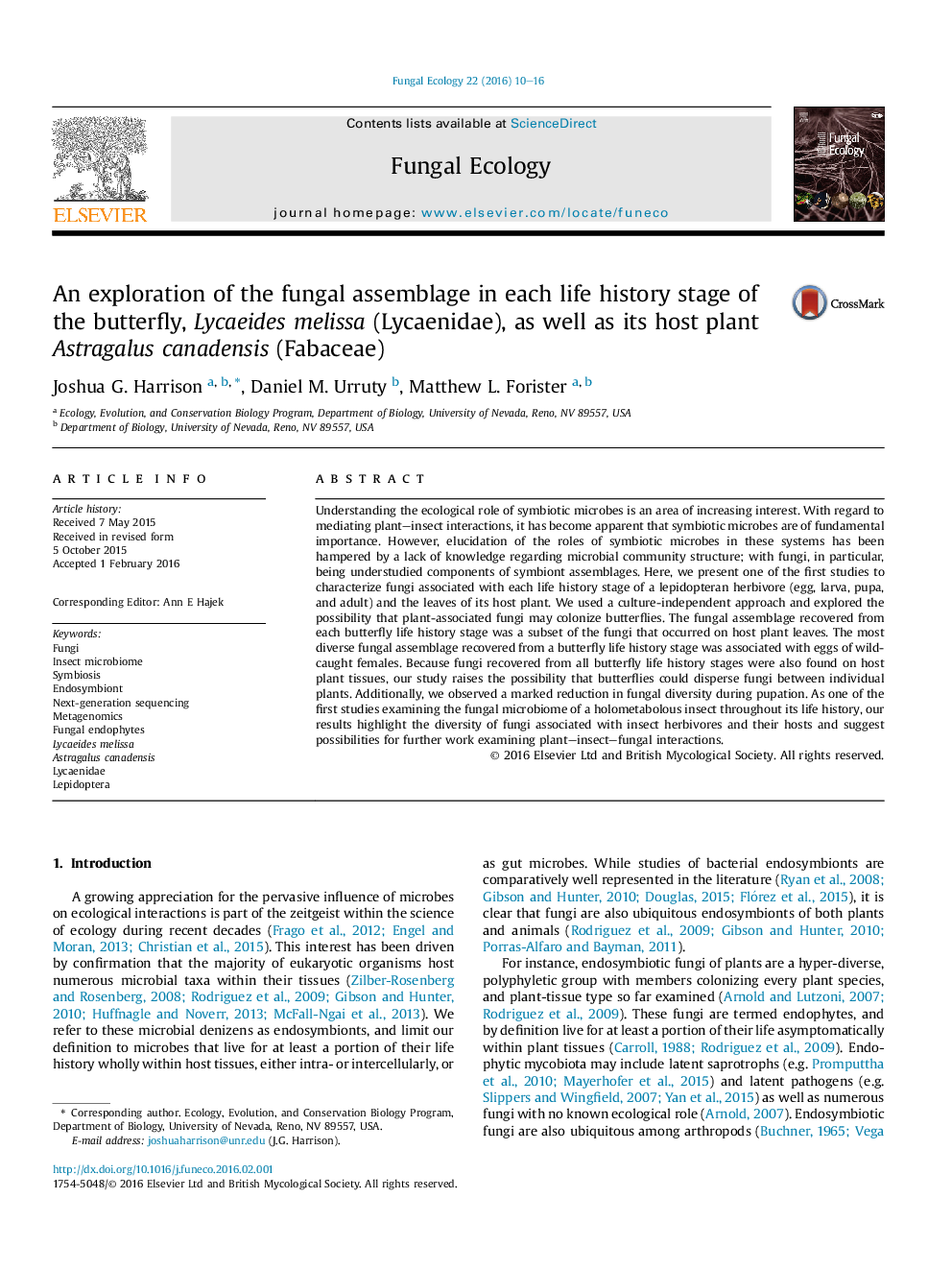| Article ID | Journal | Published Year | Pages | File Type |
|---|---|---|---|---|
| 8384350 | Fungal Ecology | 2016 | 7 Pages |
Abstract
Understanding the ecological role of symbiotic microbes is an area of increasing interest. With regard to mediating plant-insect interactions, it has become apparent that symbiotic microbes are of fundamental importance. However, elucidation of the roles of symbiotic microbes in these systems has been hampered by a lack of knowledge regarding microbial community structure; with fungi, in particular, being understudied components of symbiont assemblages. Here, we present one of the first studies to characterize fungi associated with each life history stage of a lepidopteran herbivore (egg, larva, pupa, and adult) and the leaves of its host plant. We used a culture-independent approach and explored the possibility that plant-associated fungi may colonize butterflies. The fungal assemblage recovered from each butterfly life history stage was a subset of the fungi that occurred on host plant leaves. The most diverse fungal assemblage recovered from a butterfly life history stage was associated with eggs of wild-caught females. Because fungi recovered from all butterfly life history stages were also found on host plant tissues, our study raises the possibility that butterflies could disperse fungi between individual plants. Additionally, we observed a marked reduction in fungal diversity during pupation. As one of the first studies examining the fungal microbiome of a holometabolous insect throughout its life history, our results highlight the diversity of fungi associated with insect herbivores and their hosts and suggest possibilities for further work examining plant-insect-fungal interactions.
Keywords
Related Topics
Life Sciences
Agricultural and Biological Sciences
Ecology, Evolution, Behavior and Systematics
Authors
Joshua G. Harrison, Daniel M. Urruty, Matthew L. Forister,
